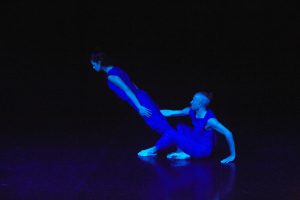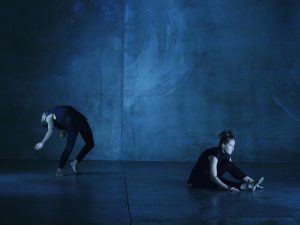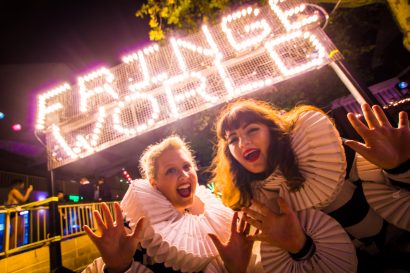If you’re not familiar with it, watching a contemporary dance work may seem like a daunting prospect. Seesaw editor and contemporary dance critic Nina Levy is here to help.
If you’ve ever attended a contemporary dance performance and walked away feeling like you missed something, you’re not alone. I’ve been involved with the art form – as a student, then teacher, then writer and critic – for over 20 years and when I tell people that my specialty is contemporary dance, I am often met with tentative smiles and/or a remark along the lines of, “I don’t really understand contemporary dance.”
Dance is an ancient and universal form of communication. So why do so many people find contemporary dance challenging to interpret?

Maybe it’s a function of today’s world, in which so many of us are distanced from our bodies, making only the most basic uses of our physical potential. Perhaps we have lost touch with that most universal of vocabularies… the language of human movement.
So let’s start our guide to watching contemporary dance there, with the body and its capacity for movement. What I love about contemporary dance is watching the performers explore what the body can do, both by itself and in collaboration with others. Undulating, trembling, jerking, freezing, floating… the capacity of the body for physical expression is vast. Just as we describe those with highly developed verbal language skills as articulate, so too, a great dancer is physically articulate, with a masterful command of the language of the body, and an extensive and varied movement vocabulary. When you’re watching contemporary dance, a starting point is to appreciate that highly developed body language.

Next, let’s break down movement into two categories – the choreography and the way that choreography is performed by the dancer or dancers.
First, choreography. In the main, the choreographer will have some kind of starting point, a story, theme, idea or concept to explore. I suggest not getting too bogged down in the information provided by the program. Frequently, choreographers will take an idea or a story as a starting point, a springboard. Maybe the result will tell a story, or convey a clear message… or maybe it will be abstract.
Let’s face it, often it will be abstract. That is, to me, the beauty of movement – it isn’t pinned to semantics. So I suggest watching contemporary dance the way you might listen to a piece of orchestral music or view a work of abstract art. Allow yourself to be absorbed in the mood, the feeling, the emotion… or even just the sheer physicality of the work. I like to remember the words of the famous choreographer Merce Cunningham, who said, “When I dance it means, ‘This is what I am doing.’” Sometimes a choreographer is simply exploring movement.
Remember the words of the famous choreographer Merce Cunningham, who said, “When I dance it means, ‘This is what I am doing.’”
Cunningham and his collaborator and partner, composer John Cage, also believed that it was up to the audience to decide what dance means… if anything. This is another useful way to view choreography. There is no “right” or “wrong” interpretation. What you find in the dance is what it means. That might be different for each audience member.
And so to the second element, the way the choreography is performed. Watch the way a trained contemporary dancer’s body moves – the lengthened limbs, the supple spine, the seamlessness of transitions. Notice the little details too. Even if the dancer is simply moving from lying to sitting, or walking from one part of the stage to another, that movement will be thoughtful.
Take pleasure in the dancers who stand out to you, the dancers who pull your eye, the ones you can’t stop watching. It might be their movement style – perhaps their fluidity or their precision or their buoyancy – and it might just be the sheer audacity of a particular personality.
Most of all, take the opportunity to revel in the fact that this art form is not tethered to words. There’s a freedom in that release from spoken or printed language that’s there to be relished. Sit back, relax and enjoy the ride.
Nina Levy
Top photo: Tyrone Robinson in Rachel Arianne Ogle’s ‘precipice’ (2014). Photo: Traianos Pakioufakis.
Like what you're reading? Support Seesaw.






